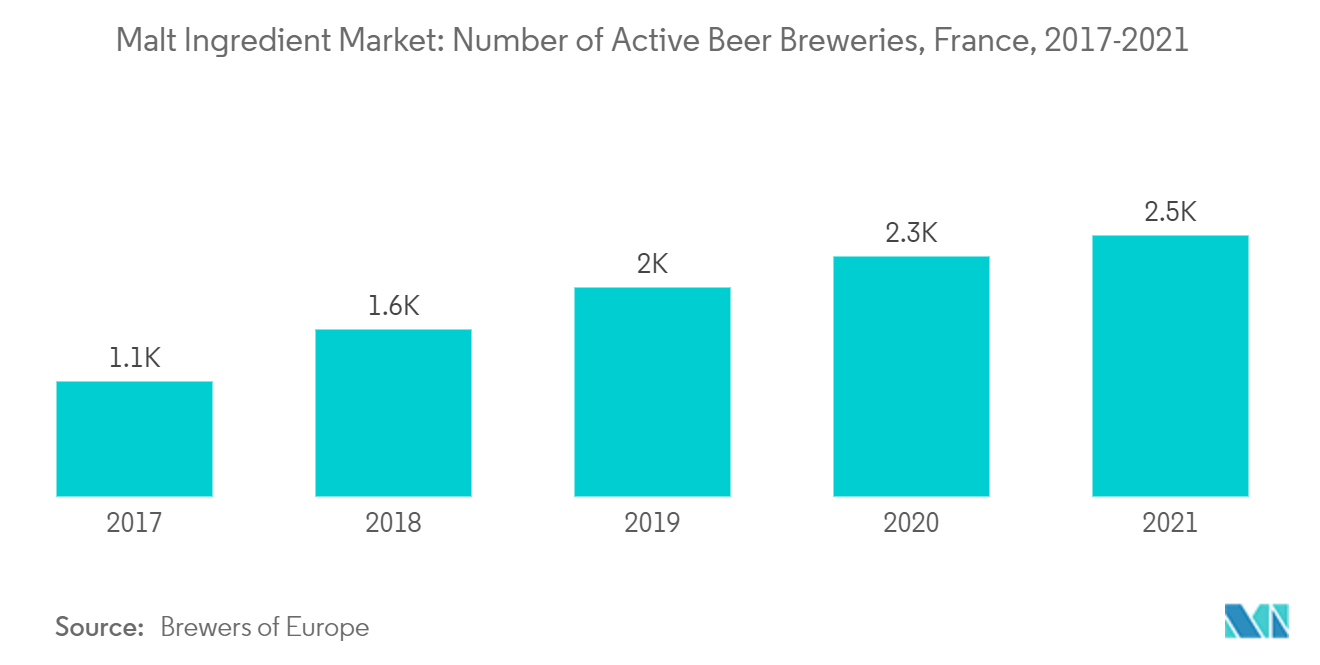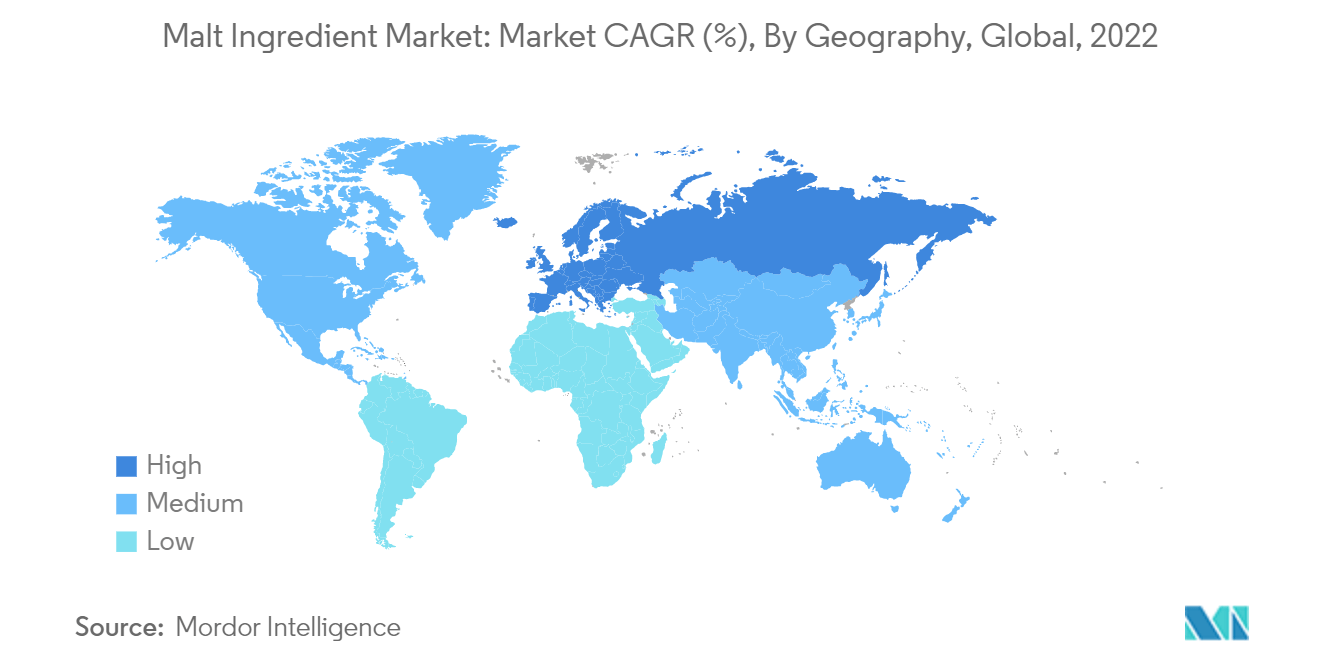Market Trends of Malt Ingredient Industry
Growing Popularity of Breweries Drives the Market Growth
- The demand for malt ingredients is on the rise, particularly among craft beer manufacturers, due to its essential role in producing unique and distinct flavor, color, and aroma in beer. With an increasing trend of social gatherings, office parties, and hangouts with friends in pubs or bars, the consumption of beer and other alcoholic drinks is also on the rise, thus accelerating the growth of the malt ingredient market.
- Another factor contributing to the growth of the market is the sustainable production of malt ingredients. Malt production is relatively sustainable, as it does not cause significant damage to water, land, air, soil, and forests. With the growing demand for sustainable ingredients among beer manufacturers, the sales of malt ingredients are further boosted.
- The increasing number of independent breweries and the growing popularity of domesticated brewed beer and craft beer among consumers are also driving the growth of the market. For instance, Sweden has around 400 active microbreweries crafting beers, according to the Brewers of Europe, in 2021. Craft breweries have been releasing innovative products with new and unique tastes and packaging to attract consumers, which has led to leading malt manufacturers providing a wide range of malt varieties suitable for various requirements of craft breweries.
- Cargill Inc., for instance, offers a range of craft malts, including Base Malts, Kilned Caramel Malts, and Roasted Malts, in varying color and flavor profiles, catering to the diverse needs of craft breweries. Overall, the increasing demand for unique and sustainable beer ingredients, the growing popularity of craft beer, and the rise of independent breweries are driving the growth of the malt ingredient market.

Europe Holds Significant Share
- Europe holds a prominent share in the malt ingredients market, primarily due to the rising consumption of alcoholic beverages and the increasing use of raw malt ingredients in breweries. In Germany, until the Middle Ages, nearly every malt grain was used for brewing. The region's rising number of craft breweries, along with the growing adoption of specialty malt among beer manufacturers, is boosting the sales of malt ingredients in Europe.
- Furthermore, the increasing demand for fine, locally brewed beers among Europeans is driving the demand for malt ingredients. Malt contributes to the sugars necessary for the fermentation process, and the residual sweetness from malt adds to the mouthfeel of the beer. Additionally, the wide application of malt ingredients in bakeries, meat and meat alternatives, snacks, sauces, and others is further driving the growth of the market.
- While the largest share of malt produced in the region is used as the main raw material for beer production, malt is highly used for the production of whiskey in Scotland. The rest of the malt produced is used as an ingredient in the food industry as natural flavoring, breakfast cereals, malted milk drinks, or malt vinegar, as well as in the pharma industry.


